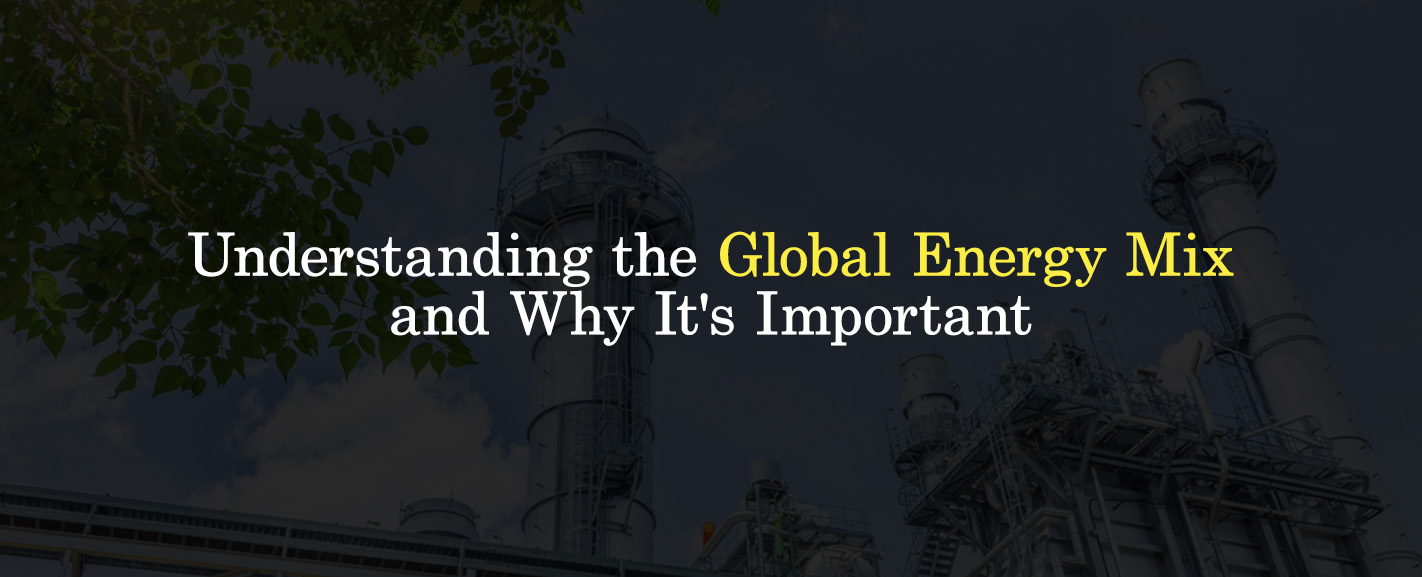Archive
What Are the Most Common Types of Drilling?
Drilling is the first step in modern oil, gas and geological operations. These industries depend on effective drilling to keep operations running, and without it, there is no extraction and processing. Global oil production is over 100 million barrels per day. The key to this rapid production rate? Advanced drilling methods.

Drilling technique influences output and changes based on formation type, target depth and operational goals.
The Importance of Reliable Sealing Solutions in Agriculture
Agriculture machinery and irrigation equipment are critical to the success of most modern farming operations. This industry faces some of the harshest conditions, and operators need to ensure their machinery's inner workings can withstand moisture, dirt, temperature fluctuations and corrosive chemicals.
What Is Agricultural Sealing?
Elastomeric seals, such as packer cups and other rubber sealing products, are critical for preventing leaks, contamination and equipment failure in agricultural operations. These are especially crucial in environments where contaminants could cause vital components to malfunction.
Global Elastomeric Products, Inc. offers a wide range of sealing solutions for the agricultural industry to improve the productivity and safety of your equipment and operations.
Uses for Rubber Molding Products and Agricultural Seals
Rubber molding products are designed to give farmers and other agricultural professionals peace of mind, knowing their equipment is protected and functional. Custom-molded components like packer cups, gaskets, O-rings and multi-spring pusher (MSP) seals provide reliable, real-life solutions to the industry's challenges.
Protection Against Contamination
Rubber molding seals are a first line of defense against environmental contaminants, preventing soil particles, dust and water from infiltrating sensitive internal mechanisms. This maintains the integrity of moving parts and reduces the risk of corrosion to support the long-term functionality of essential farm machinery like tractors and harvesters.
Temperature and Pressure Regulation
Extreme temperature fluctuations and varying pressure conditions are common concerns with agricultural equipment. Rubber seals are designed to withstand these stresses, resisting thermal expansion and contraction. This is especially critical in hydraulic systems where maintaining pressure differentials is necessary for safe and efficient operation.
Leak Prevention
From hydraulics to irrigation systems, agricultural equipment often relies on precise fluid pressure to function properly. Even minor leaks can compromise system performance and lead to costly downtime. Rubber seals provide a leakproof barrier to maintain optimal pressure within lines and components, ensuring uninterrupted performance.
Friction Reduction
Excessive friction can quietly compromise the efficiency and lifespan of components by wearing down parts and increasing the power needed for operations. Rubber molding seals made with low-friction materials help facilitate smoother operation by minimizing resistance between components.
Chemical Exposure Prevention
Rubber molding seals allow for the safe handling of agricultural chemicals, such as fertilizers, herbicides, pesticides and insecticides, during storage and application processes. By creating secure, leakproof barriers in pumps and fluid transfer systems, these seals minimize the risk of spills and direct contact with hazardous liquids and vapors.
Custom Sealings Solutions for Agricultural Equipment
At Global Elastomeric Products, Inc., we provide agricultural seals tailored to the needs of your farming operations. Our solutions are customized to fit unique equipment designs and challenging sealing surfaces to protect your equipment, enhance efficiency and reduce downtime.
Some examples of our elastomer sealing solutions for agriculture include:
- Packer cups
- O-rings
- MSP seals
- Gaskets
- Valve or pump seals
- Diaphragms
- Lip seals
- Custom sealing applications
Choose Global Elastomeric Products, Inc. for Your Agricultural Sealing Needs
Ready to improve your farm's efficiency and safety? Partner with Global Elastomeric Products, Inc. We offer various elastomeric sealing products developed specifically for agricultural applications. From standard parts to custom-engineered designs, you can count on the quality and reliability of our premium rubber components. We guarantee that our products will be free from defects for one year from purchase.
Contact Global Elastomeric Products, Inc. today for a free quote or to request a consultation for a custom agricultural sealing solution. Experience the difference that quality, reliability and over 50 years of engineering expertise can make for your operation.
Workover Rigs in the Oil and Gas Industry
Workover rigs in the oil and gas industry help restore and optimize well performance, and every component involved needs to function at peak reliability. At Global Elastomeric Products, Inc., we support these operations with engineered rubber solutions built to withstand extreme field conditions.
What Are Workover Operations?
Workover operations refer to maintenance or remedial work performed on an existing oil or gas well to restore or enhance production. Unlike drilling, which is for getting new wells to production, workovers focus on wells already in service that require repairs, cleaning or modifications.
There are different types of workover operations, geared toward different needs:
- Replacing worn-out downhole equipment.
- Cleaning out sand, scale or paraffin deposits.
- Recompleting wells to access new production zones.
- Installing artificial lift systems like pumps or plungers.
- Repairing casing damage or plugging zones.
- Making modifications to help a well produce more oil or gas.
Workover rigs are sent in once workers have stopped the flow of gas or oil. These are smaller than drilling rigs and are specialized for workover tasks.
Workover Rig vs. Drilling Rig: Understanding the Differences
Each rig has unique features and benefits. Drilling rigs, for example, are used to explore or establish new wells while workover rigs repair, service or modify existing wells. Workover rigs tend to be more mobile so they can move between well sites, while larger drilling rigs are semipermanent during drilling. They stay on-site longer while workover rigs are deployed for task-specific jobs.
Where full-scale drilling capabilities are not needed, workover rigs can be a more economical solution. They require smaller crews and come with lower costs. Workover rigs can also boost the productivity of an existing well and extend well life, reducing the costs associated with new well drilling.
Types of Workover Rigs and Operations
There are multiple types of workover rigs:
- Pulling units: For light-duty maintenance, these retrieve and replace downhole tools.
- Snubbing units: These pressure-controlled systems allow intervention in “live” wells without shutting them in.
- Hydraulic workover rigs: These rigs offer precision and control in high-pressure wells, often used offshore.
- Rotary workover rigs: These combine elements of traditional rigs with workover capabilities for deeper wells.
Similarly, types of workover operations vary based on well conditions, equipment wear and production goals. Some common types of workover operations include:
- Production enhancement operations: These work to improve the productivity of a well.
- Repair operations: These address damage and mechanical failures.
Quality Parts That Keep Your Workover Rigs Running
Workover rig operations depend on reliable components that can endure heat, pressure, abrasion and corrosive materials. Global Elastomeric Products, Inc. designs and manufactures rubber parts specifically for oilfield applications.
We’re proud to offer:
- Quick turnaround times
- Made-in-America quality
- Free quotes and competitive pricing
- Over 50 years of oilfield experience
- Custom molding options for any application
Whether you’re maintaining wells with compact workover rigs or managing large-scale well service fleets, Global Elastomeric Products, Inc. delivers the parts and precision you need. Speak with our engineering team today and get a free quote on custom-molded components that stand up to the real world of oilfield work.
6 Significant Improvements Within the Oil and Gas Industry
As technology evolves, new tools help make complex operations more efficient for the oil and gas industry. It's important to invest in tools for continuous improvement, such as new technologies using artificial intelligence (AI) and robotic systems with remote drilling capabilities.
What Is Elastomer Material?
Elastomer material is a polymer with a notably rubber-like elasticity, also known as viscoelasticity. Its key characteristic is its ability to retain its shape, even after being stretched or deformed.
Learn more about what elastomers are and what you can use them for.
What Is Elastomer Material Used For?
You can find elastomer material in various products throughout several industries — you may even own a few items with elastomer material. Everyday uses of this product include tires, footwear and sporting goods. Certain industries — such as aerospace, automotive and construction — will use elastomers to dampen vibrations and provide insulation to projects.
Manufacturing and Processing of Elastomer Rubber
The name elastomer comes from the term “elastic polymers,” which are made of several polymers cross-linked together with chemical bonds. Manufacturers purify raw materials, combine them with a catalyst and react them to create a polymer.
The process can vary, but will generally follow these steps:
- Boil raw materials to remove residual water and purify ingredients
- Mix purified ingredients with a catalyst to alter chemistry and create a polymer
- Add in another catalyst to stop the reaction at the proper moment
The Importance of Elastomer in the Oil Industry
At Global Elastomeric Products, Inc., we prioritize using the highest-quality elastomer in our oil industry products. All our products are made in the USA and tested and examined to ensure we offer our customers reliable solutions.
Specifically, elastomers are ideal for the following applications in the oil industry:
- Sealing: Elastomers are effective sealants for various oilfield components, preventing leaks that could lead to environmental damage. We sell packer elements and valve seals and BOP seals for your oil applications.
- High-pressure resistance: Elastomers work well in the oil industry, as they can withstand high pressures in drilling and production operations. This material is known for its ability to stretch and maintain its form, even under rugged conditions.
- Temperature tolerance: Elastomers can also function well in a wide range of temperatures, a critical characteristic for deep-well operations. It will also maintain its shape with hot oil and gas.
Contact Global Elastomeric Products, Inc. to Learn More Today
For over 50 years, Global Elastomeric Products, Inc. has served customers nationwide with our reliable and durable oilfield products. Our company was founded to fill this need in the industry — we are committed to helping you get quality, custom solutions for your efficiency.
Contact us today to learn more about how we can help.
Understanding the Global Energy Mix and Why It's Important

The straightforward definition of “energy mix” refers to the combination of resources to meet energy needs. These resources include fossil fuels, renewable sources and nuclear power. The global energy mix looks at how much of these resources are used worldwide and can further categorize the data by country.
The Long-Term Value of Elastomer Testing and Quality Control

An elastomer is a polymer that stretches under tension and returns to its original shape to support products that require flexibility and impact resistance. To ensure they can correctly do their job, elastomers must undergo rigorous testing and quality control management.
Why the Oil and Gas Industry Requires Continuous Innovation and Improvement
While many view renewable energy as the wave of the future, much of the world still relies on tried-and-true oil and gas to heat homes, operate vehicles and complete other essential tasks.
Maintaining and Replacing Rubber Components in Oil Extraction Equipment
Oil extraction equipment relies on various rubber molding parts and components, such as O-rings, seals, packer cups and pipe wipers, to function correctly and meet jobsite demands. Timely preventive maintenance is crucial for keeping the machinery and these supporting products in peak condition and maximizing uptime.
Types of Gaskets Used in Oil and Gas
Flange gaskets create a pressure-tight connection between pipe joints, preventing potentially hazardous leaks. Using the right type of gasket in the oil and gas industry enhances the integrity of these piping systems.





